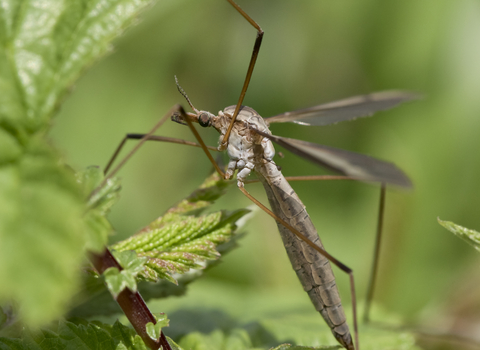
Crane fly (Tipula luna) ©Chris Lawrence
Daddy longlegs
Flitting about the house in summer, the gangly, brown daddy longlegs is familiar to many of us. They are a valuable food source for many birds.
Scientific name
TipulidaeWhen to see
June to SeptemberTop facts
About
The daddy longlegs is actually a large type of cranefly, of which there are 94 species in the UK. It is familiar to us in its adult form as the gangly insect that flits around our homes in summer. As a larva, it is a grey grub (also known as a 'leatherjacket') that lives underground, feeding on plants stems and roots. This habit makes it an unpopular species with gardeners as it can leave bare patches of lawn, and can also become an agricultural pest. The adults are on the wing during the late summer and are common in gardens and fields, often coming indoors. They rarely feed at this time, concentrating on mating and laying their eggs among the grass.The urban myth that daddy longlegs are venomous is just that - a myth! It's true that they cannot bite, but the venomous rumour is likely to have been due to its confusion with certain species of spiders.
